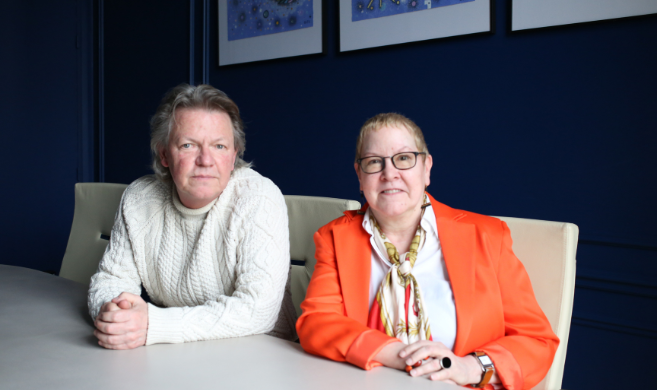listen to the breakthroughs podcast:
In this publication, your stated objective was to make sense of a plethora of research on social media and its impact on teenagers. You also hoped to create a template for consumer researchers working on this topic. Indeed, you claim that academics are not unanimous on this impact. Could you elaborate?
L.J. Shrum: Sure. What people need to remember is that everything's in constant flux. Researchers in this field of new technology have a good term for it: the moving target problem. So, for example, what Facebook was when it started is not what Facebook is now, right? Even its name has changed. So, how do you make sense of research on Facebook 10 years ago and 15 years ago in comparison to now? Even the name has changed. And the same thing is true for almost every single social media platform. It's very difficult to define. In our approach, we focused primarily on the last five years, which is when some huge breakthroughs have happened in terms of acquiring good data and doing the proper analyses.
This is a selective review of research on 13- to 21-year-olds. Why choose this age category, Tina?
Tina Lowrey: We wanted to look at adolescence, and thought it was important to include older adolescents who are starting to become young adults just because the research that was out there was showing certain patterns of impact based on age. For females, the largest vulnerable age group is 11 to 13, and for males, it's more like 14 to 15. And so, we just felt like that was a good age range to capture.
Despite this dearth of quality research and its very unequal quality, politicians and journalists appear to be very categorical in the decisions they make or the articles they publish. We've seen, for example, the Kids Off Social Media Act. That’s a bipartisan attempt to ban social media for children under the age of 13 in the United States. L.J., you're not just a consumer psychologist; you also have a PhD in communications. How would you explain the fact that people are making major decisions based on research that's divided?
L.J. Shrum:Politicians and journalists often make some blanket statements, and, for the most part, they’re not far off target, to be fair. But the devil is in the details. And, so, what we're finding in the research that's coming out is that it's not just how old you are, it's not just what gender you are, it's also how you use it and the type of social media that you use. Those are nuances that are very difficult to make a sound bite out of, and also to legislate on.
Politicians and journalists often make some blanket statements. They’re not far off target, but the devil is in the details: it's not just how old and what gender you are, it's also how you use social media and the type of social media that you use.
Tina Lowrey, there is nevertheless a certain convergence of the research that you looked at. Let's start with one: it seems that social media is negative for young girls. Could you elaborate?
Tina Lowrey: Yes. So, I think that part of the reason is the onset of puberty. There are a lot of things going on, it’s a rough time, it was this way even before social media existed.
But social media can exacerbate some of the body image issues that young women have. Again, social media didn't create this problem. But social media ratchets up the impact with considerable negative impact on young teenage girls. And I think that the other issue L.J. mentioned, is that it depends on which social media we're talking about and how you're using it. And previous research does not really account for causality. Someone who has lower self-esteem might be using social media differently to someone with higher self-esteem. Which raises the question: which came first, the social media usage or the self-esteem level? So, it's very complicated, but newer research that's more longitudinal in nature partially addresses that concern of causality.
L.J. Shrum: Coming back to the first point. We can see the same phenomenon with boys. Research seems to concur that the negative impact just happens to map onto puberty. We’re not sure whether it is causal, but that's pretty elegant. As for later on, what research seems to suggest strongly is also an increase in negative effects at around age 19 for both boys and girls. Well, that just happens to correlate or coincide with big sociological changes: we're moving out of the nest, we're going to college, we're going to work. And those these times are very anxious. And so, I think that's when you see the exacerbation that Tina refers to. That age group is about transitioning from adolescence into young adulthood. Negative well-being in that period has been around for decades. But I think again, social media just exacerbates these problems.
Tina Lowrey: And it's also very targeted. We know from some whistleblowers that the social media platforms are intentionally making it addictive. I do think that television and radio pale in comparison to how targeted social media can be. Finally, I think it’s there all the time; it’s ubiquitous - you can be completely on it 23 hours a day if you don't need any sleep. (Laugh)
There’s also a very pragmatic side to your research paper. For example, you call for more research on the underlying factors of social media usage on well-being, and you also are calling for more long-term studies on the impact on people. Could you explain how you feel this can be implemented?
L.J. Shrum: Sure. It became obvious during our analysis that more recent research points to what we call moderators. These are factors which cause greater or lesser negative impact. Now, we have this definition of social media that's very broad and scholars can't even agree on how to define it. Research shows there are different types of social media: Instagram is different to Twitter. One is very image based; the other is word based. There are ones that have different purposes. And so, what's starting to come out is that certain types of social media may have negative effects at a young age. If you take Instagram, it may have a bigger negative effect, let's say, on adolescent body image, whereas other types of social media may have none of the effects you would predict. So, understanding which social media are causing a problem, what kinds of problems they're causing, and also how you use it is essential. Yet, there’s just not enough research accurately defining social media. We also suggest further research on what we refer to as active or passive uses. Are you posting, and are you engaging, or are you just lurking and looking? These usages seem to have different effects on adolescents. Active is associated with a more positive impact on self-esteem than the more passive use of social media where you're not actively engaged, so you're being negatively impacted by what you see and hear.










